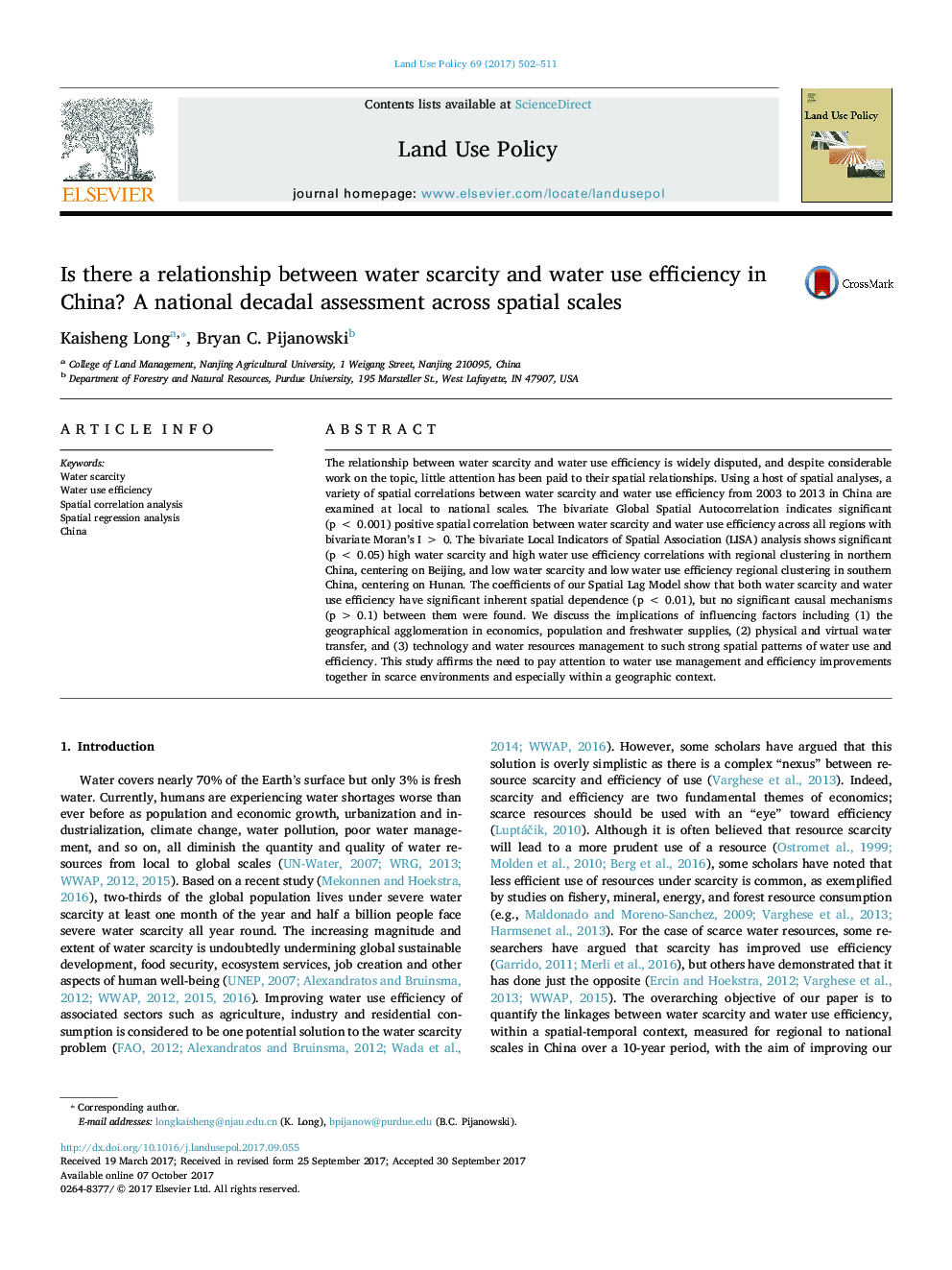| کد مقاله | کد نشریه | سال انتشار | مقاله انگلیسی | نسخه تمام متن |
|---|---|---|---|---|
| 6460438 | 1421814 | 2017 | 10 صفحه PDF | دانلود رایگان |
- Spatial relations between water scarcity and water use efficiency are examined.
- Spatial clustering exists between water scarcity and water use efficiency in China.
- No causal link between water scarcity and water use efficiency in China.
- Spatial correlations are affected by economics, water transfer and management etc.
- Emphasis should be placed on spatial water use management and efficiency.
The relationship between water scarcity and water use efficiency is widely disputed, and despite considerable work on the topic, little attention has been paid to their spatial relationships. Using a host of spatial analyses, a variety of spatial correlations between water scarcity and water use efficiency from 2003 to 2013 in China are examined at local to national scales. The bivariate Global Spatial Autocorrelation indicates significant (p < 0.001) positive spatial correlation between water scarcity and water use efficiency across all regions with bivariate Moran's I > 0. The bivariate Local Indicators of Spatial Association (LISA) analysis shows significant (p < 0.05) high water scarcity and high water use efficiency correlations with regional clustering in northern China, centering on Beijing, and low water scarcity and low water use efficiency regional clustering in southern China, centering on Hunan. The coefficients of our Spatial Lag Model show that both water scarcity and water use efficiency have significant inherent spatial dependence (p < 0.01), but no significant causal mechanisms (p > 0.1) between them were found. We discuss the implications of influencing factors including (1) the geographical agglomeration in economics, population and freshwater supplies, (2) physical and virtual water transfer, and (3) technology and water resources management to such strong spatial patterns of water use and efficiency. This study affirms the need to pay attention to water use management and efficiency improvements together in scarce environments and especially within a geographic context.
Journal: Land Use Policy - Volume 69, December 2017, Pages 502-511
